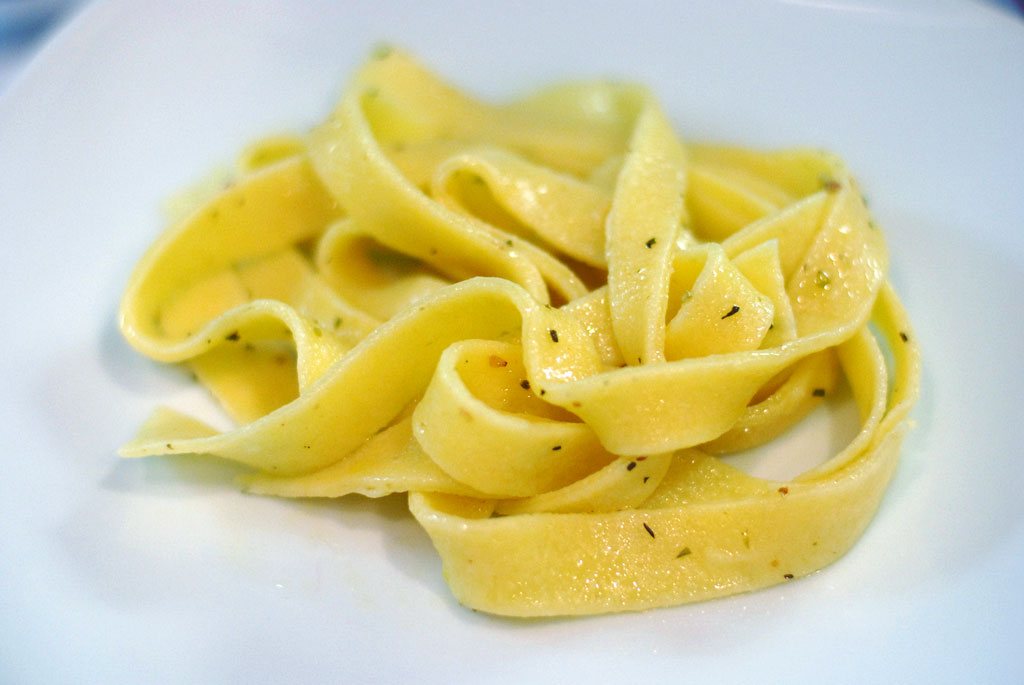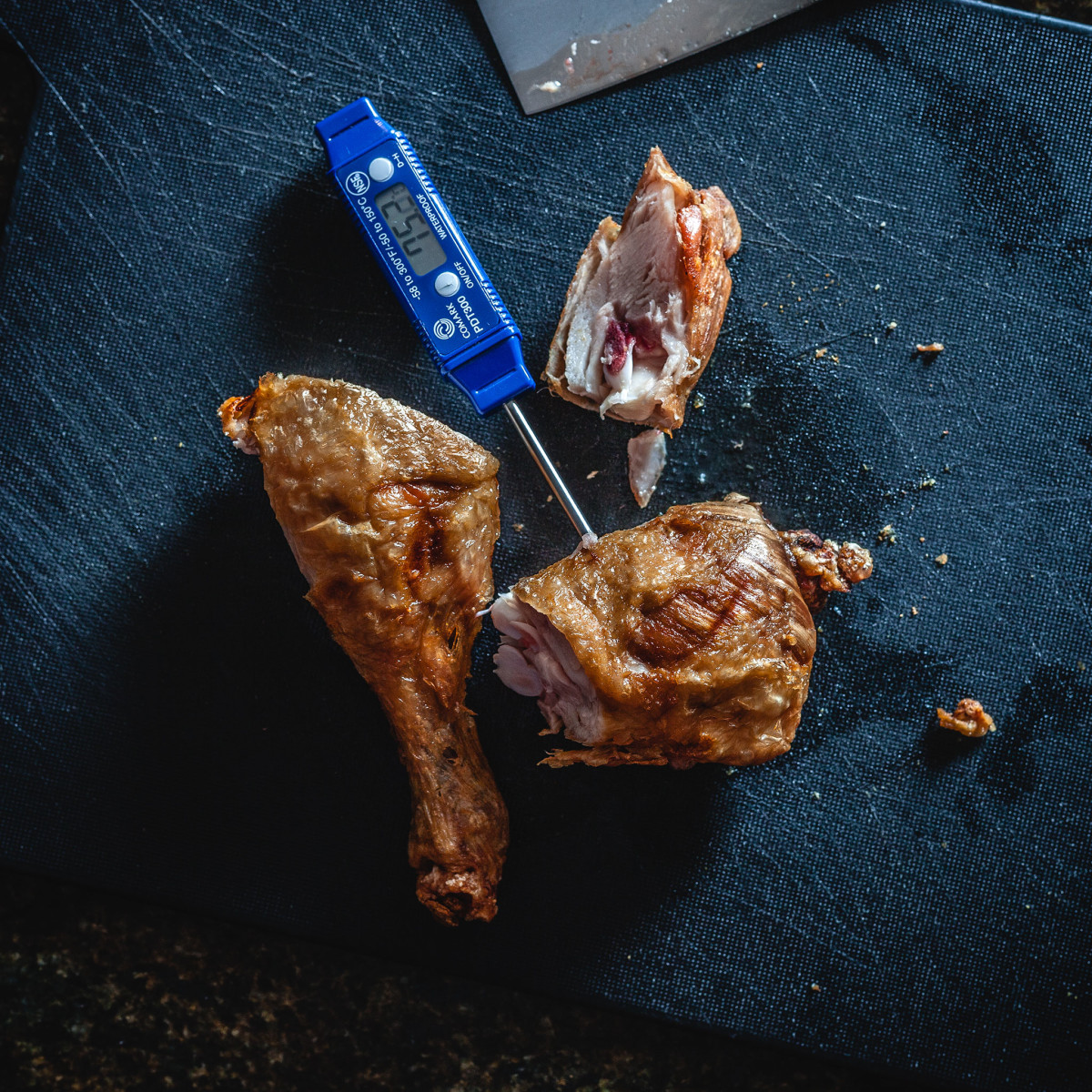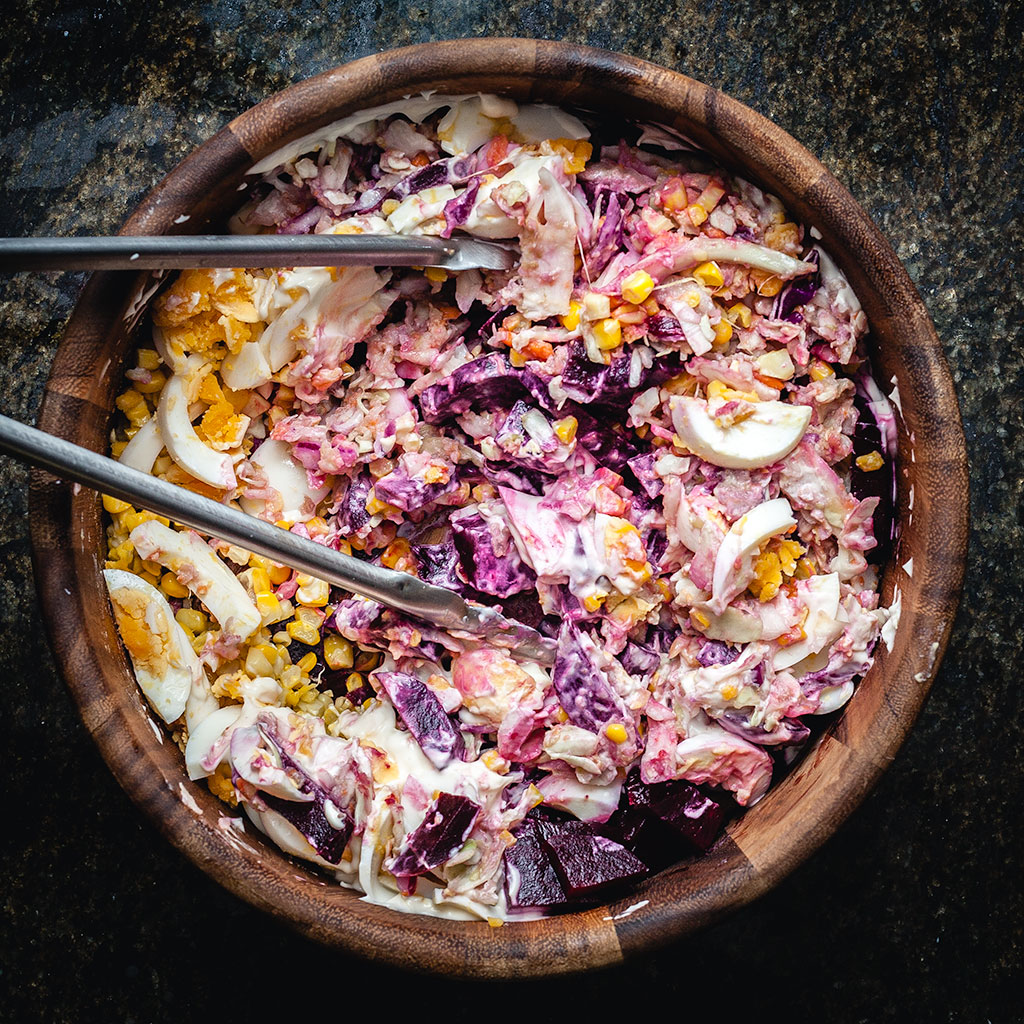This is another one of those skills anyone serious about cooking should probably learn. Making your own pasta is extremely satisfying, rewarding and yummy!
Tools:
A scale.
A place to mix stuff, cutting board or stand mixer bowl or glass bowl, etc.
Cutting surface to roll dough or pasta press.
Knife, cookie cutter, pizza cutter, razor blade… basically anything to cut it.
Some counter space.More if you are making long pasta or tons of it.
Quick Recipe:
100g flour (*)
1 large egg
Quick method:
Mix both ingredients
Knead for 5-10 mins (**)
Rest for for about an hour (***)
(*) 50%50% AP+Semolina, either,a ratio, up to you really.
(**) Add more flour if dough sticks to fingers.
(***) 20 mins minimum, gluten needs to relax.
 rolling pin and knife, not that terrible!
rolling pin and knife, not that terrible!
A better explanation on how and why:
Crucial Tip: For every 100g of flour use 1 large egg. That’s pretty much it. Easiest thing to remember, next time that cooking challenge calls for making fresh pasta… no need to consult that mobile device.
Then incorporate the 2 ingredients. You can do the well in the middle of the flour mound over a wooden surface and then draw the flour into the beaten eggs in the center of the well…. it’s kinda cool and romantic. However….have yet to read or be told by anyone why this is important. The only reason I can think of is… less stuff to clean (no bowls, or hooks) and large batches can be made all at once. But if making less than 4 pounds of dough, throw the ingredients in a stand mixer and end up with the same result: pasta dough.
Keep kneading time to 10 mins. Dough should be elastic and a bit sticky. There are all sorts of debate as to how long to knead for, which leads me to believe it isn’t that critical and driven by how people like their pasta. The more kneading, the more relaxing time the dough needs since more gluten was developed. I have yet to test what’s the difference in texture, but I could guess it could relate to that of bread making, longer kneading times, silkier and chewier. Shorter… crumblier result. So, somewhere in between would be nice.
Let rest for 20mins to an hour. Will allow gluten to relax and will make the dough less resistant to your will.
The rest…. pasta machine, rolling pin, using your fingers… imagination is the limit. Shape them however you prefer or however your technology allows you to shape the pasta.
Note for flat pasta like fettuccine, including pasta packets like ravioli, I personally prefer very thin sheets, should be translucently thin. Pasta machine helps quite a bit here but rolling pin does the trick too.
To Cook:
Throw uncooked fresh pasta in boiling salted water (1% – 2% solution perhaps, salty like the ocean? maybe? most importantly, taste the water and know that some if not most of that saltiness will get transferred to the cooked pasta, also I wouldn’t salt the water too much if cooking stuffed pasta with salty fillings like feta ravioli, it all has to be balanced and never too salty, taste, taste, taste) for about 3-6 minutes, depends really on the thickness of the pasta… thinner will set faster. Cook too long… and it will become mushy.
Note:
Dust excess flour off pasta as much as possible before boiling. Otherwise this flour will swell and gel and breakup the smooth surface making the texture of the cooked pasta rougher.
done.

Wanna get more sous-vide cooking guides and cool cooking how-to’s in your mailbox? You know what needs to be done!
We never spam. You should only be getting updates when new content is posted on the site. We also respect your privacy. We don’t share your email address with anyone and you can unsubscribe anytime!





2 comments
I LOVE making fresh pasta!